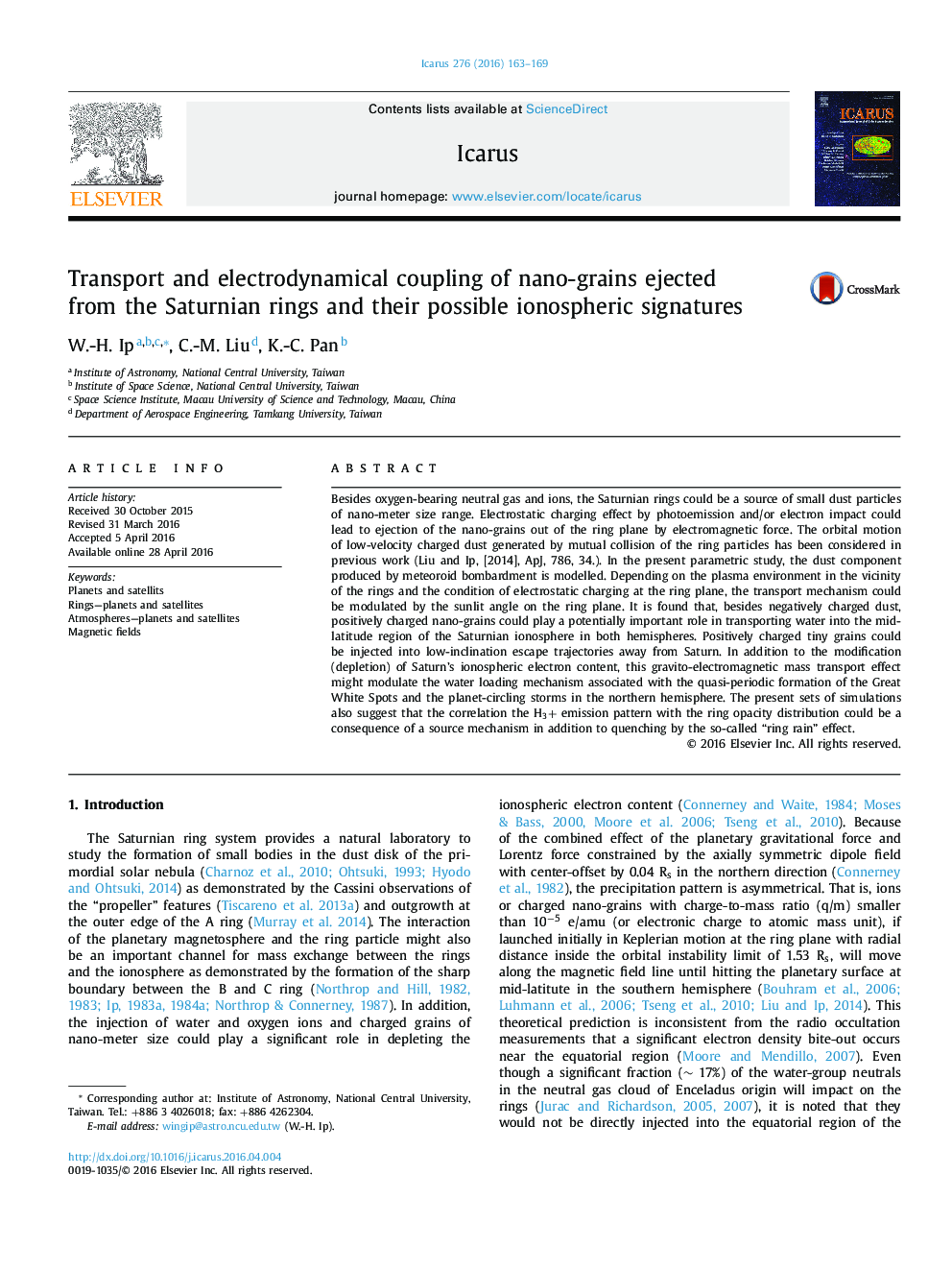| کد مقاله | کد نشریه | سال انتشار | مقاله انگلیسی | نسخه تمام متن |
|---|---|---|---|---|
| 1772915 | 1523514 | 2016 | 7 صفحه PDF | دانلود رایگان |
عنوان انگلیسی مقاله ISI
Transport and electrodynamical coupling of nano-grains ejected from the Saturnian rings and their possible ionospheric signatures
ترجمه فارسی عنوان
انتقال و الکترووداینامیک جفت کردن نانوذراتی که از حلقه های زحل حل شده و امواج یونوسفر ممکن است
دانلود مقاله + سفارش ترجمه
دانلود مقاله ISI انگلیسی
رایگان برای ایرانیان
کلمات کلیدی
سیارات و ماهواره ها، حلقه ها - سیارات و ماهواره ها، اتمسفر-سیارات
و ماهواره ها، میدانهای مغناطیسی،
موضوعات مرتبط
مهندسی و علوم پایه
علوم زمین و سیارات
علوم فضا و نجوم
چکیده انگلیسی
Besides oxygen-bearing neutral gas and ions, the Saturnian rings could be a source of small dust particles of nano-meter size range. Electrostatic charging effect by photoemission and/or electron impact could lead to ejection of the nano-grains out of the ring plane by electromagnetic force. The orbital motion of low-velocity charged dust generated by mutual collision of the ring particles has been considered in previous work (Liu and Ip, [2014], ApJ, 786, 34.). In the present parametric study, the dust component produced by meteoroid bombardment is modelled. Depending on the plasma environment in the vicinity of the rings and the condition of electrostatic charging at the ring plane, the transport mechanism could be modulated by the sunlit angle on the ring plane. It is found that, besides negatively charged dust, positively charged nano-grains could play a potentially important role in transporting water into the mid-latitude region of the Saturnian ionosphere in both hemispheres. Positively charged tiny grains could be injected into low-inclination escape trajectories away from Saturn. In addition to the modification (depletion) of Saturn's ionospheric electron content, this gravito-electromagnetic mass transport effect might modulate the water loading mechanism associated with the quasi-periodic formation of the Great White Spots and the planet-circling storms in the northern hemisphere. The present sets of simulations also suggest that the correlation the H3+ emission pattern with the ring opacity distribution could be a consequence of a source mechanism in addition to quenching by the so-called “ring rain” effect.
ناشر
Database: Elsevier - ScienceDirect (ساینس دایرکت)
Journal: Icarus - Volume 276, 15 September 2016, Pages 163-169
Journal: Icarus - Volume 276, 15 September 2016, Pages 163-169
نویسندگان
W.-H. Ip, C.-M. Liu, K.-C. Pan,
